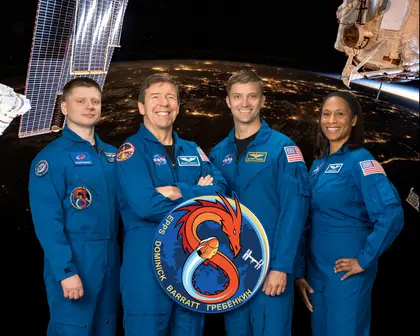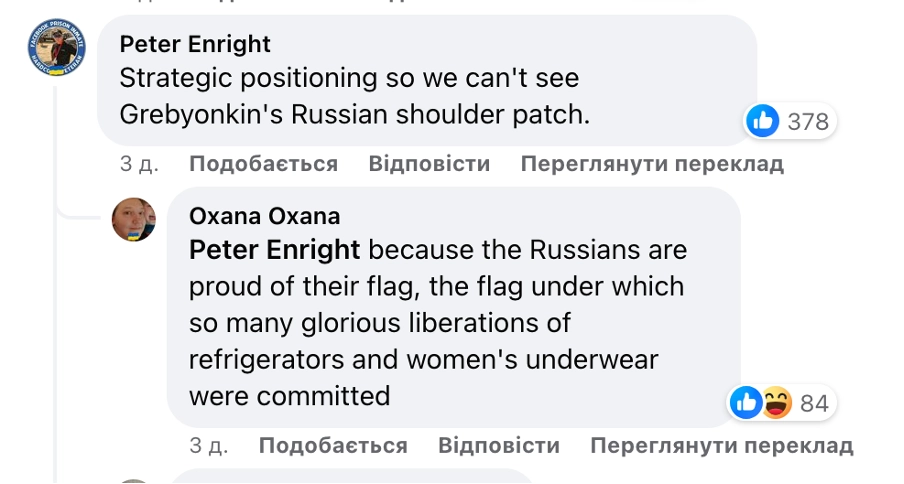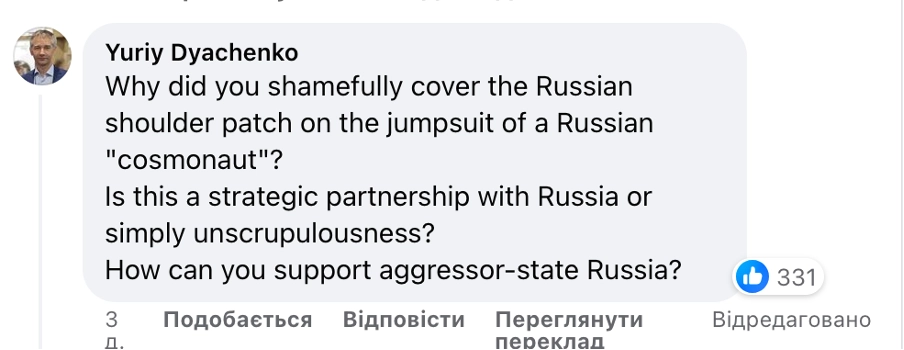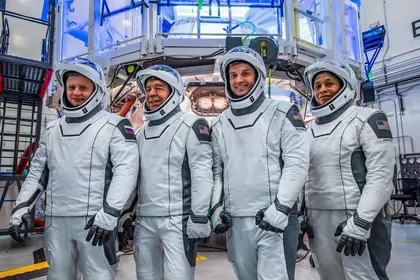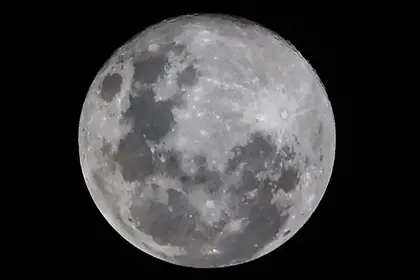Alexander Grebenkin, a former Russian military officer and current Roscosmos cosmonaut, is set to travel to the International Space Station as part of the NASA team, as announced on the NASA website, where Ukrainians have commented their outrage.
NASA, in collaboration with SpaceX, plans to launch Crew-8 to the International Space Station no earlier than Thursday, Feb. 22.
JOIN US ON TELEGRAM
Follow our coverage of the war on the @Kyivpost_official.
The Crew-8 team consists of NASA astronauts Matthew Dominik (commander), Michael Barratt (pilot), and mission specialist Jeanette Epps, along with Russian cosmonaut Grebenkin. Their mission, spanning approximately six months, will involve various research and operational tasks.
Crew-8 will journey to the space station aboard the Dragon spacecraft, named Endeavour, currently undergoing refurbishment for its fifth flight.
According to information from open sources, Alexander Grebenkin has no space flight experience and, before joining the cosmonaut detachment, served in technical and operational units of the Russian Air Force as a commissioned military officer.
In 2002, he graduated from the Irkutsk Military Aviation Engineering Institute with a qualification in Technical Operation of Transport Radio-Electronic Equipment.
From July 2002 to November 2018, Grebenkin served at the Kubinka Air Base in the Moscow region of Russia. Initially, he worked as a technician and calculation engineer for the preparation of aircraft for REO flights (radio-electronic warfare aircraft) of the Stryzhi [“Swifts”] aerobatic demonstration group (military unit 54876).
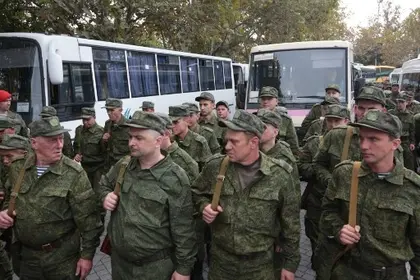
‘We Need to Train Our Men’ – Russian Official Urges Mobilization Prep, Warns of War With the West by 2028
From November 2009 to January 2011, he served as an engineer and head of the regulation and repair group in military unit 45809.
Additionally, in January 2015, Grebenkin was appointed head of the group in the technical and operational unit of the 237th Aviation Equipment Display Center named after I.M. Kozhedub (military unit 62632-I). He was promoted to the military rank of major.
Grebenkin received medals “For distinction in military service” I, II, and III degrees.
In November 2018, he was enrolled at the Gagarin Scientific Research Test Center for Cosmonaut Training, the primary Russian institution for cosmonaut training. Grebenkin began general space training, and, in December 2020, he received the qualification of test cosmonaut.
On Mar. 1, 2023, at a meeting of the Roscosmos Interdepartmental Commission, Grebenkin was included in the crew of the American manned ship Crew Dragon (Crew-8 mission).
The flight involving the Russian is scheduled to take place two days before the second anniversary of Russia’s full-scale invasion of Ukraine.
NASA’s Facebook post about this flight received a flurry of criticism and negative comments from Ukrainian users of the social network: Ukrainians demanded explanations from the American space agency and condemned cooperation with Roscosmos.
Commenters drew attention to the fact that in the photo, an American astronaut blocks the view of Grebenkin’s left sleeve, which bears a shoulder patch with the Russian flag.
Some commenters claimed that this Russian is a war criminal and fought against Ukraine until 2017.
Kyiv Post could not find confirmation that Grebenkin fought directly in the combat zone on the occupied territory of Ukraine. However, from 2014 until entering service as a cosmonaut candidate in 2018, he served in the military in the village of Novy Gorodok, Moscow Region of the Russian Federation.
During that period, the Russian armed invasion of Crimea took place in February-March 2014, and the war in Donbas, which began with the creation of the so-called Donetsk and Luhansk “people’s republics,” lasted until the beginning of the large-scale invasion.
You can also highlight the text and press Ctrl + Enter


